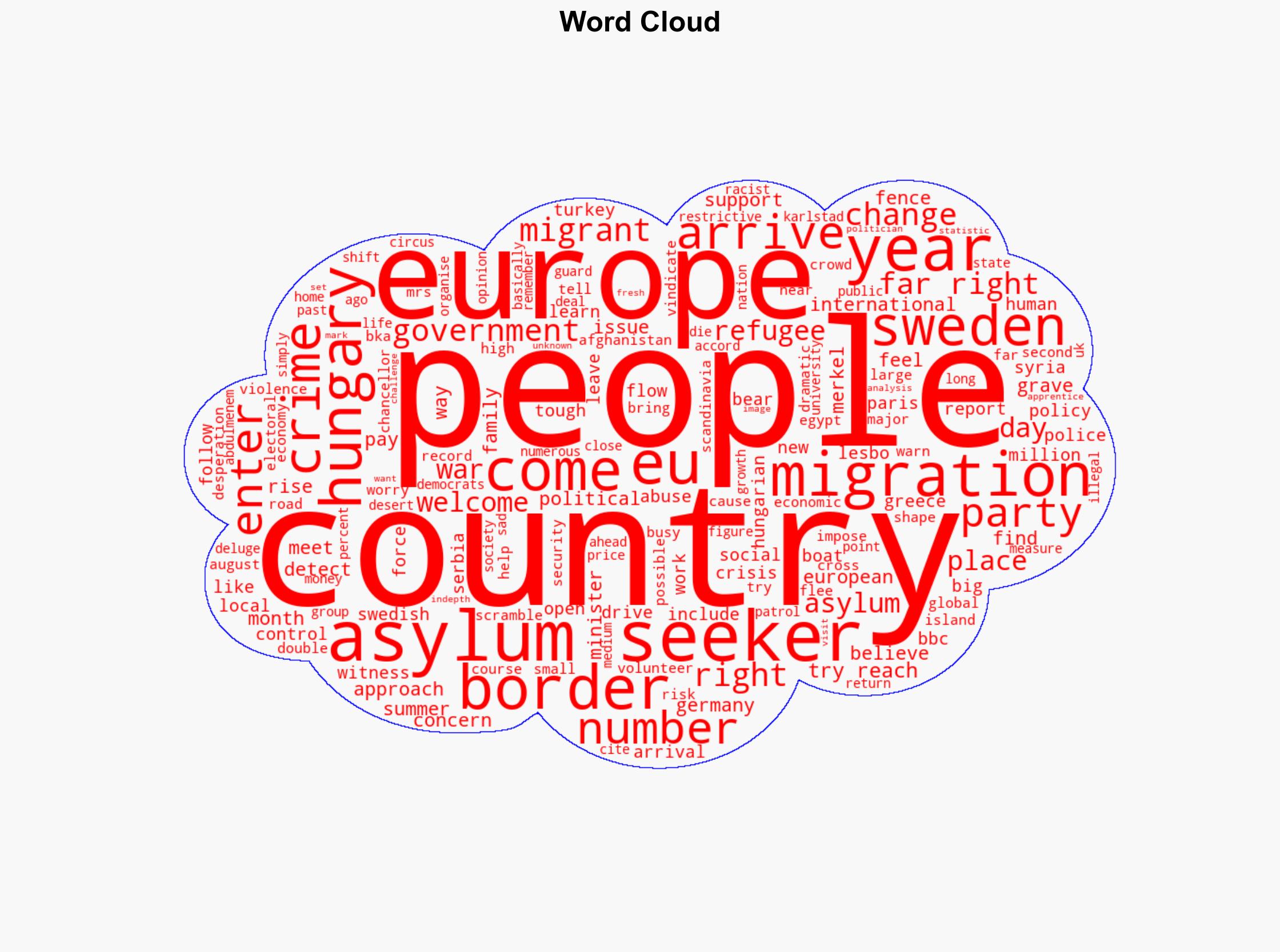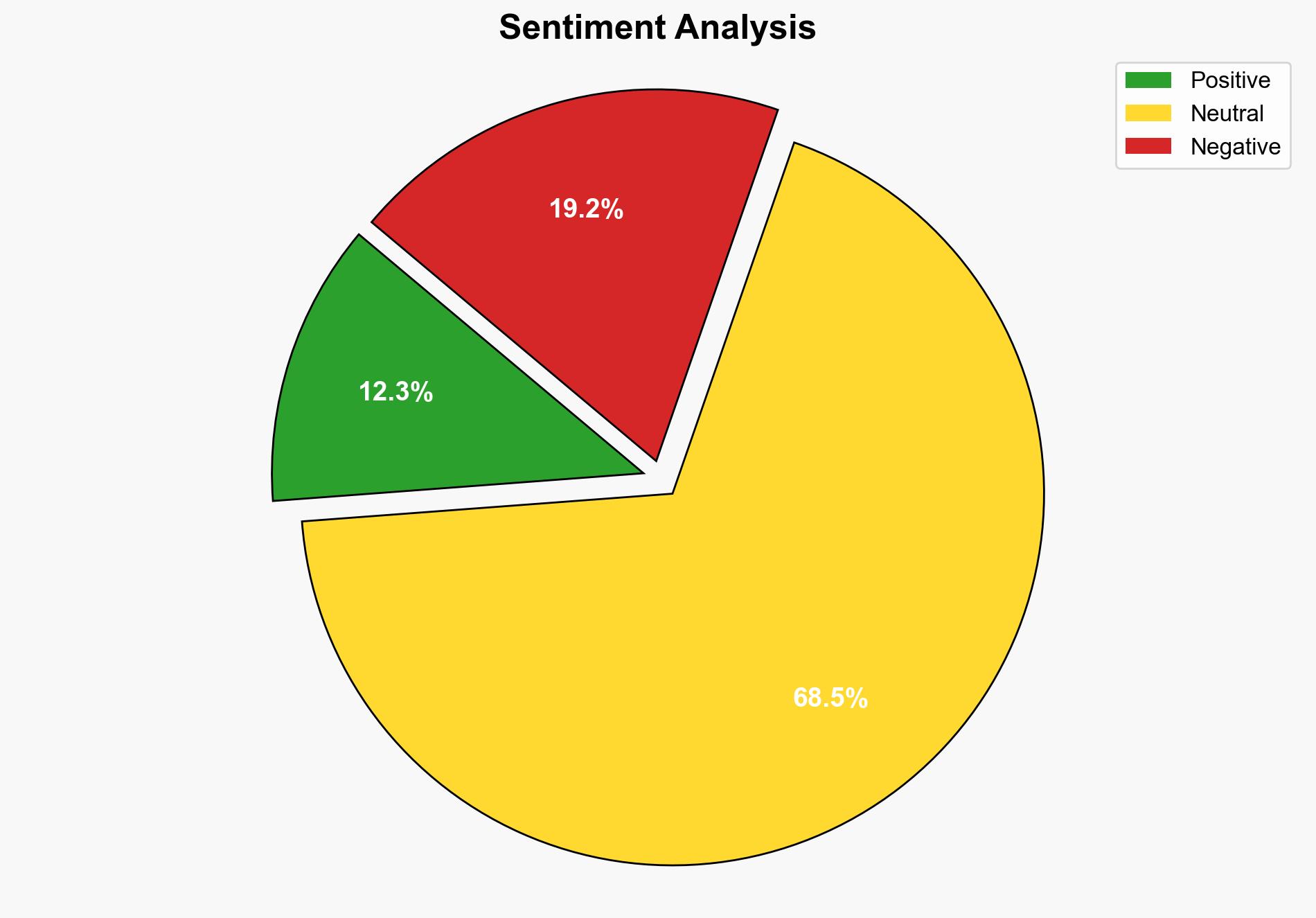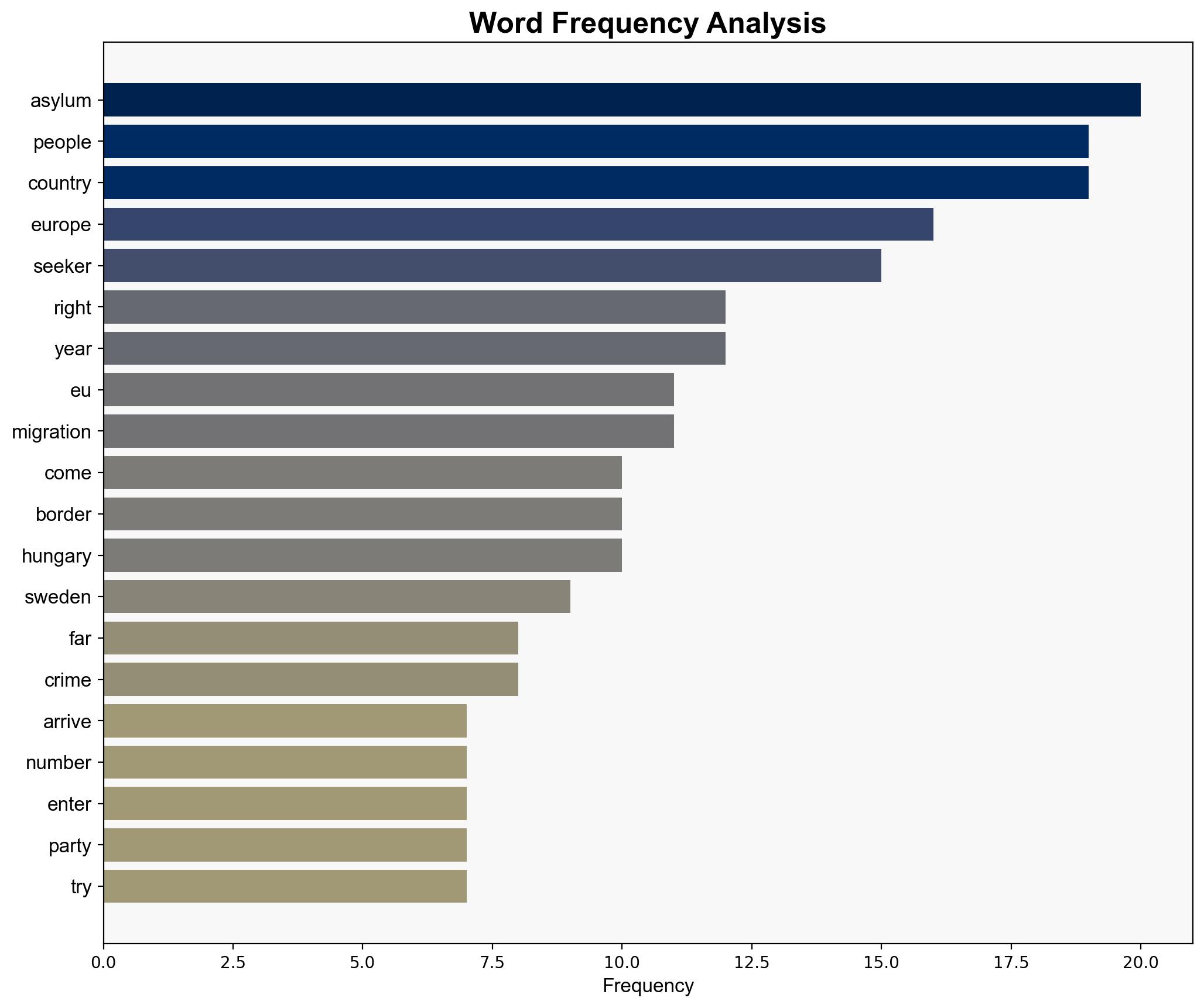Migrant crisis How Europe went from Merkel’s We can do it ten years ago to pulling up the drawbridge – BBC News
Published on: 2025-09-03
Intelligence Report: Migrant Crisis – Europe’s Shift from Merkel’s “We Can Do It” to Restrictive Policies
1. BLUF (Bottom Line Up Front)
Europe’s migration policy has shifted significantly from a welcoming stance to a more restrictive approach due to political, economic, and security concerns. The most supported hypothesis is that domestic political pressures and the rise of far-right parties have driven this change. Confidence level: High. Recommended action: European nations should balance security concerns with humanitarian obligations, ensuring policies are sustainable and do not exacerbate regional tensions.
2. Competing Hypotheses
1. **Hypothesis A**: The shift in Europe’s migration policy is primarily driven by domestic political pressures, including the rise of far-right parties and public disillusionment with government handling of migration.
2. **Hypothesis B**: The change is mainly a response to security concerns and economic challenges exacerbated by the influx of migrants.
Using ACH 2.0, Hypothesis A is better supported due to the correlation between the rise of far-right parties and the implementation of stricter migration controls. Electoral data and political rhetoric suggest a strong link between public sentiment and policy changes.
3. Key Assumptions and Red Flags
– **Assumptions**: Both hypotheses assume that migration policies are primarily reactive rather than proactive. Hypothesis A assumes political motivations outweigh humanitarian considerations.
– **Red Flags**: Potential bias in attributing policy changes solely to political pressures without considering broader geopolitical factors. Inconsistent data on the economic impact of migration could skew analysis.
4. Implications and Strategic Risks
– **Patterns**: Increasing alignment of European policies with far-right agendas could lead to a more fragmented EU.
– **Cascading Threats**: Stricter policies may push migrants to take more dangerous routes, increasing humanitarian crises and potential for human trafficking.
– **Potential Escalation**: Rising tensions between EU countries with differing migration policies could strain diplomatic relations.
5. Recommendations and Outlook
- **Mitigation**: Develop a unified EU migration framework that balances security with humanitarian needs.
- **Exploitation**: Leverage international cooperation to address root causes of migration, such as conflict and economic instability.
- **Scenario Projections**:
– **Best Case**: Harmonized EU policy reduces illegal migration and supports integration.
– **Worst Case**: Fragmentation of EU policies leads to increased regional tensions and humanitarian crises.
– **Most Likely**: Continued political pressure results in incremental policy tightening with periodic humanitarian interventions.
6. Key Individuals and Entities
– Angela Merkel: Former German Chancellor whose initial open-door policy has been reversed.
– Viktor Orban: Prime Minister of Hungary, known for his hardline stance on migration.
7. Thematic Tags
national security threats, migration policy, political dynamics, European Union, humanitarian crisis




